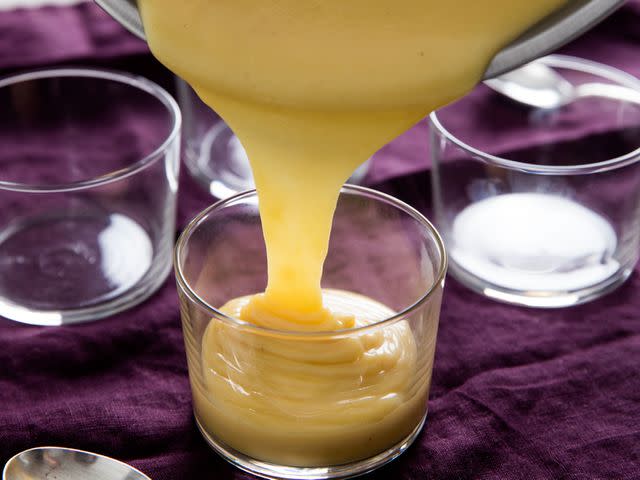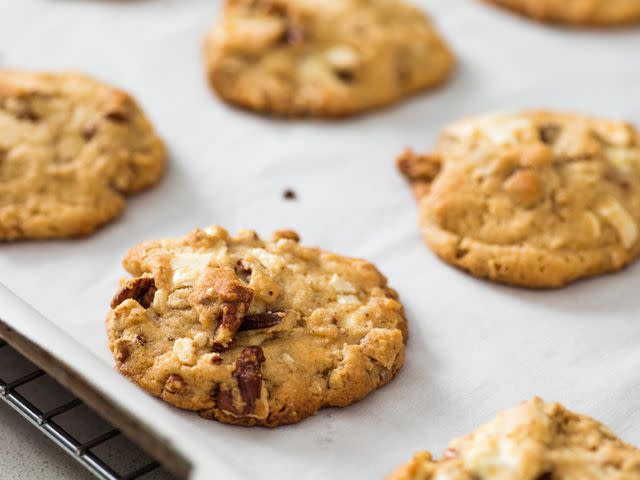Meet the Umami Bomb of Dessert: Malted Milk Powder
If you love umami bombs like soy sauce and Marmite, it's time you got to know the dessert equivalent: malted milk powder.

Serious Eats / Vicky Wasik
Considering I've featured it in recipes for both butterscotch pudding and malted chocolate chip cookies, you'd be right to assume I've got a soft spot for malted milk powder—but what is it?
What Is Malted Milk Powder?
Whether found in familiar containers of Ovaltine and Carnation or purchased in bulk from some less famous brand, malted milk powder is a simple combination of wheat flour and malted barley extracts, along with milk, salt, and sodium bicarbonate to adjust its pH. Each brand has a proprietary formula, giving each its own flavor; some are more dairy-forward, and others are more distinctly grainy, but they're all similar enough to be used interchangeably.
The blend of concentrated grain extracts gives malted milk powder a roasted, toasty, earthy flavor, while the powdered milk adds a bit of creamy richness. In the oven, the extra lactose helps baked goods brown, while also lending a cooked-milk flavor along the lines of butterscotch or toffee. Finally, the salt and sodium bicarbonate in the mix add a savory edge to the whole shebang, tempering the sweetness of any recipe and giving it a bit more depth of flavor. (Think about the difference between breadsticks and a soft pretzel.) The combination of these unique properties makes malted milk powder something of an umami bomb for dessert—just whip up one of these recipes to taste it for yourself.

Serious Eats / Vicky Wasik
Because it's low in sugar and not very starchy, it's easy to add malted milk powder to your favorite recipes without derailing the underlying ratio of ingredients, but you should be careful not to confuse it with two other similarly named products: diastatic and non-diastatic malt powders. Unlike diastatic malt powder, malted milk powder isn't enzymatically active, so it won't affect the behavior of yeasted doughs. In that way, malted milk powder is like non-diastatic malt powder, an inactive form of barley malt extract that is fairly high in sugar. What sets malted milk powder apart is that it's comparatively low in sugar thanks to the inclusion of wheat extracts and powdered milk, which serve to give it a more complex flavor overall.
How to Use Malted Milk Powder
To make use of malted milk powder at home, add it to taste in your favorite cookie doughs, cake batters, ice creams, and custards (bearing in mind that its milky notes will intensify with heat). It can even be added to bread dough to improve browning and flavor in recipes with a short fermentation period. The only real precaution you should take is to remember that it does contain added sodium, so you may need to cut back on the salt.*
*To be honest, I find a lot of dessert recipes to be under-salted, so this isn't a huge concern.

Serious Eats / Vicky Wasik
A Vegan and Gluten-Free Substitute
Due to the wheat and barley extracts, malted milk powder isn't suitable for those who don't eat gluten, and, of course, the powdered milk makes it non-vegan; even if those ingredients are fine for you, it's worth making a mental note for those times when you bake for friends. For both vegans and celiacs, a good alternative to malted milk powder is kinako, a type of roasted soy flour found in Japanese markets. While it's not a 1:1 substitution, a spoonful can add a similar nutty toastiness to many desserts. And, because kinako is full-fat (unlike American-style soy flour), its roasted flavor has a richness that can stand in for the toffee-like taste that lactose develops in the oven.
That said, in my heart, there's no replacement for malted milk powder and its sweet-and-savory mix of milky, butterscotch-y flavor. You can find it next to other instant drinks like hot cocoa in supermarkets, or buy your favorite brands online.
March 2017

